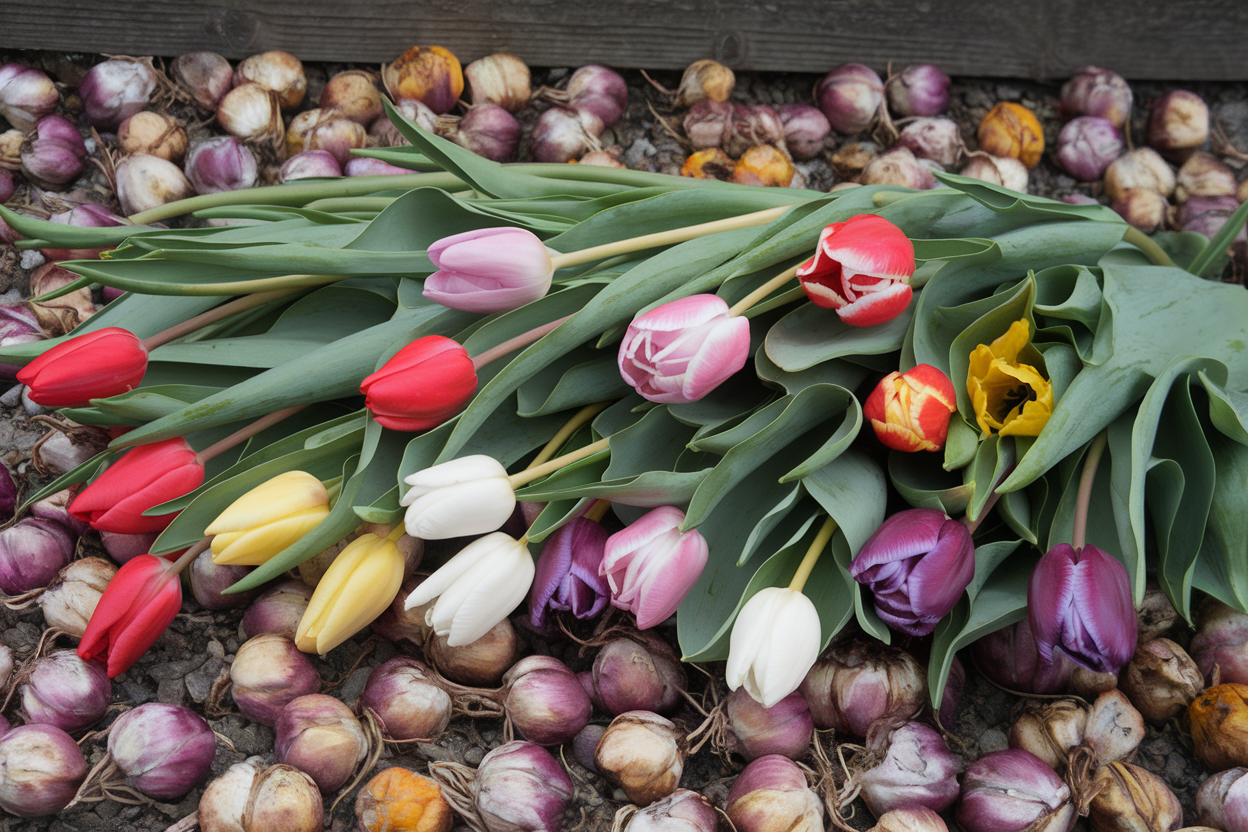
Talk about tulips for long, and someone is sure to mention the 17th-century phenomenon known as Tulip Mania. It’s a good story — one that says a lot about flowers and money, and how the passion for either or both can reach insane heights.
Tulip Mania could only have happened in the Netherlands, during the Dutch Golden Age of travel and trade, in the early 1600s. Dutch merchants were bringing home to Europe tobacco from the New World, spices from the Far East, and other such exotica—including tulip bulbs from Turkey. (Tulips actually originated farther east, in the northern Himalayan mountains—but that’s another story.)
Tulips had a particular appeal for the wealthy Dutch of this era, who were living in smaller family units than was common throughout Europe at the time. Favoring a rich yet simple style of living, they were drawn toward elements of home décor that were often exotic (expressive of affluence) but also comfortable, rather than ornate. By the 1630s, tulips were so popular that tulip fanciers formed clubs where they could trade the bulbs.
This was the first society in Europe, perhaps in the world, with a social structure based more on trade than on agriculture. During the Dutch Golden Age, Dutch traders essentially created capitalism. The Dutch East India Company, the primer mover in Dutch mercantile society, was the first in the world to offer shares to ordinary citizens and allow them to sell or trade shares. It launched a stock trading culture that soon required its own new building, the world’s first stock exchange.
It’s not surprising, then, that the Dutch also manufactured the world’s first stock market crash—with speculation centered on tulip bulbs. It might not have happened if the trade in bulbs had taken place within the official stock market, which had already developed regulations, primarily against fraud. Instead, bulbs were traded in the clubs and in taverns, cafés, and private homes. Prices began to skyrocket — and as they did so, speculators outside the clubs took notice, purchasing bulbs only in order to sell them again a year later. Naturally, this pushed prices even higher.
The crisis arrived in early 1637, when the prices dropped overnight. Bulbs that had sold for 5,000 guilders apiece—the equivalent of a wealthy family’s life savings—were now worth no more than 50 guilders.
Many factors likely entered into the crisis. They included a recent visitation of the Black Death, which left behind a few survivors wealthy by inheritance, along with the feeling, perhaps, that life and prosperity are at best a gamble.
The Tulip Mania crash did not bring down the prosperous Dutch economy. But it left behind an object lesson in the true value, not to be measured in money, of anything as beautiful and ephemeral as a flower.
Herein lies the intrigue: the dramatic difference between the short-lived natural beauty of a flower and the cold calculations of stock-market speculators. The key to the paradox lies in the tulip bulb, a perishable package of stored beauty with an uncertain future. Just as the tulip bulb is the secret to the flowers’ speedy growth, it is also the feature that made Tulip Mania possible.
Read more about the current tulip industry in the July issue of Floral Management.
Bruce Wright is a contributing writer for the Society of American Florists.





